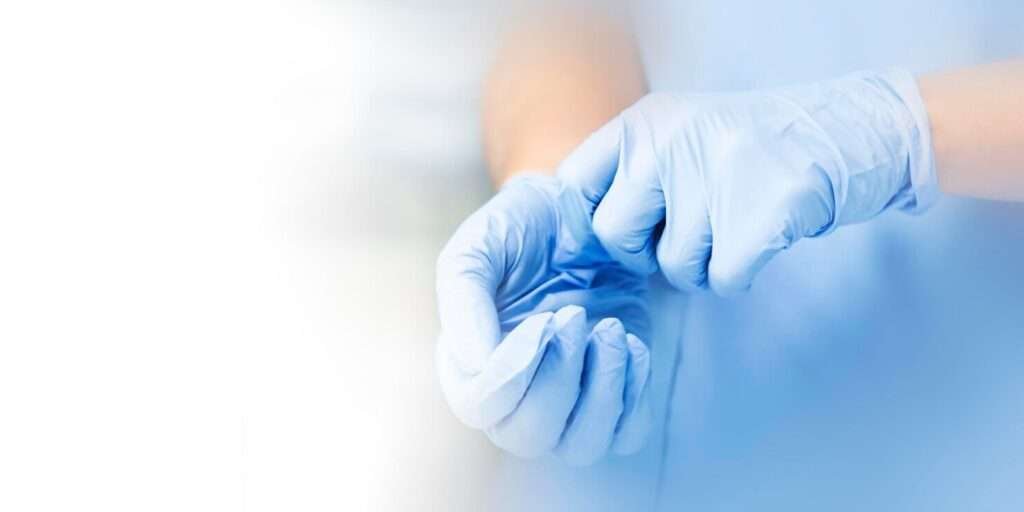Introduction to Breast Cancer Symptoms
This article discusses the breast cancer symptoms. Breast cancer is a significant health concern that affects millions of individuals worldwide. Early detection is crucial, as it can greatly improve treatment outcomes and survival rates. This article aims to provide a comprehensive overview of breast cancer symptoms and signs, as well as practical advice on prevention and treatment options. By the end, readers will have a deeper understanding of this disease and how to navigate its complexities.

Table of Contents
What Are the Breast Cancer Symptoms?
Breast cancer symptoms can present differently among various individuals, and these symptoms may change according to several factors, including age, gender, and genetic predisposition. Each person’s experience with these breast cancer symptoms is unique, making it essential to recognize the range of signs that may indicate the presence of the disease. Understanding these breast cancer symptoms is crucial for ensuring early detection, which can significantly improve treatment outcomes and overall prognosis. Being aware of these variations is important in order to seek medical advice promptly if any concerning changes occur.
Common Breast Cancer Symptoms in Women
Women are more commonly affected by breast cancer, and they should be vigilant about recognizing the signs. Common breast cancer symptoms include:
- Lumps in the Breast: One of the most frequently recognized and concerning breast cancer symptoms is the presence of a lump or mass in the breast tissue. This lump may feel firm or hard and can often be distinctly different in texture from the surrounding breast tissue, which can help in identifying it during self-examination. It’s important to pay close attention to any noticeable changes, as not all lumps are benign.
- Changes in Breast Size or Shape: Noticeable changes in the size or shape of one breast in comparison to the other can indicate potential issues that should not be overlooked. If one breast appears larger or smaller than usual, or if there are asymmetrical changes that develop over time, it could be a sign of an underlying condition that requires medical evaluation.
- Skin Changes: The skin covering the breast or nipple may exhibit various changes, such as becoming red, swollen, or developing a dimpled appearance. These alterations in the skin can be indicative of inflammatory breast cancer, a rare but aggressive form of the disease, and should be promptly assessed by a healthcare professional for an accurate diagnosis.
- Nipple Discharge: Any unexplained discharge from the nipple, particularly if it is bloody or occurs without any squeezing of the breast, should raise concerns and prompt a medical evaluation. This type of discharge can be a symptom associated with several conditions, some of which may be serious, making it essential to seek medical advice.
- Pain or Tenderness: Although breast pain is often linked to benign conditions such as hormonal fluctuations or cysts, persistent discomfort that does not correlate with the menstrual cycle should not be ignored and warrants further investigation. It is crucial to report ongoing pain to a healthcare provider, as it may indicate a more serious underlying issue that requires attention.

Breast Cancer Symptoms in Men
Although breast cancer is much rarer in men, awareness of breast cancer symptoms is equally important. Men should look out for:
- Lumps in the Breast Tissue: Just like women, men can also experience the development of lumps in their breast tissue, which should not be overlooked and must be thoroughly evaluated. These lumps may vary in size and consistency, and regardless of their nature, it is crucial to seek medical advice to determine whether they are benign or indicative of a more serious health issue.
- Nipple Changes: Any noticeable changes in the nipple area, including retraction, swelling, or unusual discharge, should be taken seriously and discussed with a healthcare professional. These alterations can signal underlying problems and warrant careful examination to ensure that any potential issues are addressed promptly.
- Swelling or Hardening: The presence of swelling or hardening in the breast area can serve as an alarming breast cancer symptoms in men. It is important for individuals to pay attention to these changes and to consult with a medical provider to investigate the cause. Early detection and evaluation are vital in managing any potential health risks associated with these breast cancer symptoms.

Breast Cancer Awareness: Understanding the Importance
Raising awareness about breast cancer is essential for early detection and treatment. October is recognized as Breast Cancer Awareness Month, during which various campaigns aim to educate the public about breast cancer symptoms, risk factors, and the importance of regular screenings.
Breast Cancer Awareness Quotes
Inspirational quotes can motivate individuals to prioritize their health and encourage others to do the same. Some notable quotes include:
- “Awareness is the first step in prevention.”
- “Breast cancer knows no boundaries; it affects everyone.”
Breast Cancer Awareness Symbols
The pink ribbon has become a universally recognized emblem representing awareness for breast cancer. This iconic symbol plays a significant role in raising consciousness about the relentless battle against breast cancer, reminding us of the importance of continued efforts in research, prevention, and comprehensive support for individuals and families impacted by this disease. By wearing or displaying the pink ribbon, people show their solidarity and commitment to increasing awareness, while also honoring those who have bravely faced this diagnosis. The pink ribbon ultimately serves not just as a visual cue, but as an enduring reminder of the crucial need for ongoing education and community support in the fight against breast cancer.
Breast Cancer Treatment Options
When a person is diagnosed with breast cancer, there are multiple treatment options that can be considered for their care and recovery. The decision regarding which treatment to pursue is influenced by several important factors, including the specific stage of the cancer, the type of breast cancer that has been identified, and unique characteristics related to the individual patient, such as their overall health and personal preferences. Therefore, it is essential to take a comprehensive approach in evaluating the most appropriate treatment plan for each patient.
Conventional Treatment Options
- Surgery: The surgical approach to treating breast cancer may involve a procedure known as lumpectomy, which focuses on the selective removal of the tumor itself while preserving as much surrounding breast tissue as possible. Alternatively, a mastectomy may be performed, which entails the complete removal of one breast or, in more advanced cases, both breasts to ensure that all cancerous tissue is excised. This decision is often based on the size and location of the tumor, as well as the patient’s overall health and preferences.

- Radiation Therapy: Radiation therapy is a treatment modality that utilizes high-energy waves, such as X-rays or proton beams, to specifically target cancer cells. By directing these powerful waves at the area affected by cancer, radiation therapy seeks to destroy the cancer cells and reduce the risk of recurrence. This treatment may be employed after surgery to eliminate any remaining cancer cells in the breast or surrounding lymph nodes, thereby enhancing the chances of a successful recovery.
- Chemotherapy: Chemotherapy represents a systemic treatment approach that involves the use of powerful medications designed to eliminate cancer cells throughout the entire body. Unlike localized treatments, chemotherapy works by circulating through the bloodstream to reach cancer cells that may have spread beyond the original site. This intensive treatment is often administered in cycles to maximize its efficacy while minimizing side effects, and it plays a crucial role in treating various stages of breast cancer.

- Hormonal Therapy: For cases of hormone receptor-positive breast cancers, hormonal therapy is an important treatment option that aims to interfere with the body’s natural hormones which can stimulate cancer growth. This therapy typically involves the use of medications that either block the action of hormones like estrogen or lower hormone levels in the body. By doing so, hormonal therapy helps to slow or stop the progression of the cancer, providing patients with an effective means of managing their condition and improving their overall prognosis.

Breast Cancer Treatment Natural Remedies
In addition to conventional treatments, some individuals explore natural remedies. While these should never replace professional medical advice, they may complement traditional therapies. Some popular natural remedies include:
- Dietary Changes: Incorporating a breast cancer prevention diet rich in fruits, vegetables, and whole grains can support overall health.
- Herbal Supplements: Certain herbs, such as turmeric and green tea, are believed to have anti-cancer properties.
- Mind-Body Techniques: Practices like yoga and meditation may help reduce stress and improve quality of life during treatment.

Breast Cancer Prevention Diet and Exercises
Embracing a healthy lifestyle can play a crucial role in greatly lowering the chances of developing breast cancer in the future. By making conscious choices about diet, exercise, and overall well-being, individuals can significantly mitigate their risk factors associated with this serious disease.
Breast Cancer Prevention Diet
A well-balanced and nutritious diet is essential in helping to prevent cancer and maintaining overall health. Among the key components that contribute to this important aspect of disease prevention are:
- Fruits and Vegetables: These food groups are abundant in antioxidants, which play a crucial role in helping to combat oxidative stress within the body. Antioxidants work by neutralizing free radicals, thereby reducing the potential damage these harmful molecules can cause to cells over time. Including a variety of colorful fruits and vegetables in your daily diet not only provides essential vitamins and minerals but also enhances overall health and well-being.
- Healthy Fats: It is important to incorporate sources of omega-3 fatty acids into your eating habits, as they may offer protective effects for your body. Foods such as fatty fish, like salmon and mackerel, as well as plant-based options like flax seeds and walnuts, are excellent sources of these beneficial fats. Regular consumption of omega-3s is linked to various health benefits, including support for heart health and potential reductions in inflammation.

- Limit Alcohol Consumption: Research studies suggest that excessive alcohol intake is associated with an increased risk of developing breast cancer, among other health issues. It is advisable to be mindful of alcohol consumption and consider moderating intake, as doing so may contribute to lowering the risk of various diseases. Establishing limits on how much alcohol you consume could lead to better health outcomes in the long term.
Breast Cancer Prevention Exercises
Regular physical activity is another vital aspect of breast cancer prevention. Engaging in at least 150 minutes of moderate aerobic exercise each week can help maintain a healthy weight and reduce risk factors associated with breast cancer.

Conclusion
Understanding breast cancer symptoms and the importance of early detection can empower individuals to take control of their health. By being aware of the signs, engaging in preventive measures, and exploring treatment options, both women and men can navigate the complexities of breast cancer more effectively.
Frequently Asked Questions (FAQs)
1. What are the first signs of breast cancer?
The initial indicators that may suggest the presence of breast cancer often involve several noticeable physical changes. One of the most common signs is the detection of a lump or mass within the breast tissue, which may feel different from the surrounding area. Additionally, individuals may observe alterations in the overall size or shape of the breast, which can be a cause for concern. Moreover, there may be unusual discharge coming from the nipple, which is not typical for that person. Collectively, these signs can serve as important warning signals that warrant further medical evaluation.
2. Can men get breast cancer?
Indeed, it is true that men can develop breast cancer, even though this condition is significantly less common in males compared to females. The associated with male breast cancer symptoms can include the presence of unusual lumps or swellings in the breast tissue, as well as noticeable changes in the appearance or texture of the nipple. These signs are important to be aware of, as early detection can lead to more effective treatment outcomes.
3. What lifestyle changes can help prevent breast cancer?
Embracing a nutritious diet that is abundant in fresh fruits and vegetables, combined with consistently engaging in physical activity through a regular exercise routine, and being mindful to limit alcohol intake can significantly contribute to lowering the risk of developing breast cancer. By making these lifestyle changes, individuals can work towards improving their overall health and well-being, while simultaneously taking proactive steps to enhance their chances of reducing the likelihood of breast cancer occurrence.
4. What are the treatment options for breast cancer?
There are several treatment options available for cancer patients, which may include surgical procedures designed to remove tumors, radiation therapy that utilizes high-energy beams to target and destroy cancer cells, chemotherapy that involves the use of powerful drugs to eradicate cancer throughout the body, and hormonal therapy that aims to manipulate hormone levels to impede the growth of hormone-sensitive cancers. The selection of the appropriate treatment method is determined by various factors, such as the specific type of cancer present and the stage at which the cancer has progressed.
5. How can I support breast cancer awareness?
You have the opportunity to make a meaningful impact on breast cancer awareness by actively participating in various awareness campaigns that promote understanding of the disease. Additionally, you can contribute by sharing educational materials that provide valuable information about prevention and detection. It is also important to encourage your friends and family members to schedule regular screenings and check-ups, as this can help in early detection and increase the chances of successful treatment. Together, these actions can significantly enhance awareness and support for those affected by breast cancer.
By prioritizing awareness, early detection, and healthy lifestyle choices, we can collectively work towards reducing the impact of breast cancer on individuals and communities.



